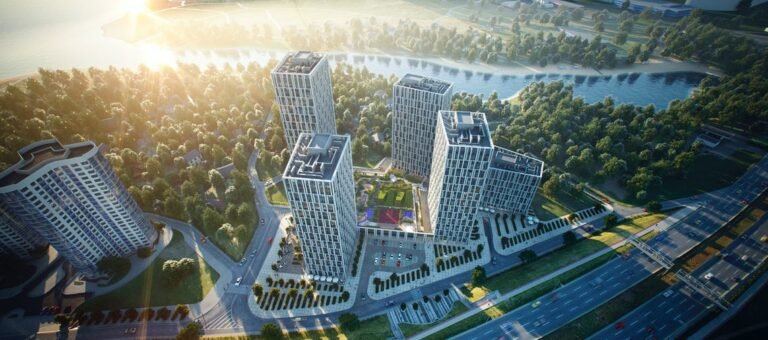a stack of timber A-frames by enota architects to extend slovenia’s hotel natura
enota architects extends a slovenian hotel
Enota Architects presents the design of its Hotel Natura extension, a project which aims to elevate the touristic resort in Rogla, Slovenia. The architecture will take shape as the final timber addition to a group of hotels, representing perhaps the biggest visual departure from the recognizable expression of the previous interventions, which references the rural landscape to a larger degree.
Hotel Natura was designed as Rogla’s highest-rated hotel, but was never fully realized. Much of the envisioned accommodations remained unbuilt, however the investor now intends to modify its typology and to extend the hotel with the addition of multi-purpose common areas and a recreational swimming pool.
 visualizations © Spacer
visualizations © Spacer
a mountain chalet through a modern lens
Enota Architects notes the romantic view of untouched nature which greets visitors from the existing Hotel Natura at the top of Rogla. The design team asks: ‘How does one tackle an extension where essentially half a hotel needs to be added?‘ If the same design approach is retained, the hotel’s volume — which already stands out somewhat from the local landscape — will only become more present. Thus, designing the new section with an independent appearance, but with a logical affiliation with the existing building, presents itself as a suitable solution.

a facade of rooftops
With its Hotel Natura extension, Enota Architects aims to ‘connect the unconnectable,’ integrating the facade with the roof. The facade is thus transformed into a stack of timber gable rooftops, an element known to be characteristic throughout the area. The timber on the facade is freely stacked and unprotected, allowing it to age and coalesce with the appearance of the surrounding landscape. The new addition therefore doesn’t reference the existing building as much as it does the surrounding forest and traditional rural development.

inside the hotel natura extension
Inside, the program is organized with a clear division between the public and private spaces. The entire public program features taller stories that open toward the forest hinterland to the north, while all of the guest rooms feature slightly lower ceiling heights and are oriented toward the ski stadium to the south. The differences in floor heights are bridged by a new staircase established as a ‘vertical hall,’ as well as a new double-sided lift.
Such design lends itself to attractive interior spaces offering abundant cross-views and natural lighting, including in the corridors. Despite establishing a clear separation between the public and accommodation sections, they may also be reconnected in instances when the entire annex or its individual self-contained sections is rented out.

a facade takes shape as a stack of timber rooftops
 the design is a contemporary translation of the familiar mountaintop chalet
the design is a contemporary translation of the familiar mountaintop chalet



